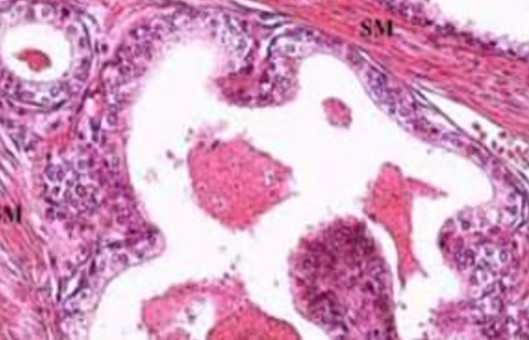Resources
-
Cell Services
- Cell Line Authentication
- Cell Surface Marker Validation Service
-
Cell Line Testing and Assays
- Toxicology Assay
- Drug-Resistant Cell Models
- Cell Viability Assays
- Cell Proliferation Assays
- Cell Migration Assays
- Soft Agar Colony Formation Assay Service
- SRB Assay
- Cell Apoptosis Assays
- Cell Cycle Assays
- Cell Angiogenesis Assays
- DNA/RNA Extraction
- Custom Cell & Tissue Lysate Service
- Cellular Phosphorylation Assays
- Stability Testing
- Sterility Testing
- Endotoxin Detection and Removal
- Phagocytosis Assays
- Cell-Based Screening and Profiling Services
- 3D-Based Services
- Custom Cell Services
- Cell-based LNP Evaluation
-
Stem Cell Research
- iPSC Generation
- iPSC Characterization
-
iPSC Differentiation
- Neural Stem Cells Differentiation Service from iPSC
- Astrocyte Differentiation Service from iPSC
- Retinal Pigment Epithelium (RPE) Differentiation Service from iPSC
- Cardiomyocyte Differentiation Service from iPSC
- T Cell, NK Cell Differentiation Service from iPSC
- Hepatocyte Differentiation Service from iPSC
- Beta Cell Differentiation Service from iPSC
- Brain Organoid Differentiation Service from iPSC
- Cardiac Organoid Differentiation Service from iPSC
- Kidney Organoid Differentiation Service from iPSC
- GABAnergic Neuron Differentiation Service from iPSC
- Undifferentiated iPSC Detection
- iPSC Gene Editing
- iPSC Expanding Service
- MSC Services
- Stem Cell Assay Development and Screening
- Cell Immortalization
-
ISH/FISH Services
- In Situ Hybridization (ISH) & RNAscope Service
- Fluorescent In Situ Hybridization
- FISH Probe Design, Synthesis and Testing Service
-
FISH Applications
- Multicolor FISH (M-FISH) Analysis
- Chromosome Analysis of ES and iPS Cells
- RNA FISH in Plant Service
- Mouse Model and PDX Analysis (FISH)
- Cell Transplantation Analysis (FISH)
- In Situ Detection of CAR-T Cells & Oncolytic Viruses
- CAR-T/CAR-NK Target Assessment Service (ISH)
- ImmunoFISH Analysis (FISH+IHC)
- Splice Variant Analysis (FISH)
- Telomere Length Analysis (Q-FISH)
- Telomere Length Analysis (qPCR assay)
- FISH Analysis of Microorganisms
- Neoplasms FISH Analysis
- CARD-FISH for Environmental Microorganisms (FISH)
- FISH Quality Control Services
- QuantiGene Plex Assay
- Circulating Tumor Cell (CTC) FISH
- mtRNA Analysis (FISH)
- In Situ Detection of Chemokines/Cytokines
- In Situ Detection of Virus
- Transgene Mapping (FISH)
- Transgene Mapping (Locus Amplification & Sequencing)
- Stable Cell Line Genetic Stability Testing
- Genetic Stability Testing (Locus Amplification & Sequencing + ddPCR)
- Clonality Analysis Service (FISH)
- Karyotyping (G-banded) Service
- Animal Chromosome Analysis (G-banded) Service
- I-FISH Service
- AAV Biodistribution Analysis (RNA ISH)
- Molecular Karyotyping (aCGH)
- Droplet Digital PCR (ddPCR) Service
- Digital ISH Image Quantification and Statistical Analysis
- SCE (Sister Chromatid Exchange) Analysis
- Biosample Services
- Histology Services
- Exosome Research Services
- In Vitro DMPK Services
-
In Vivo DMPK Services
- Pharmacokinetic and Toxicokinetic
- PK/PD Biomarker Analysis
- Bioavailability and Bioequivalence
- Bioanalytical Package
- Metabolite Profiling and Identification
- In Vivo Toxicity Study
- Mass Balance, Excretion and Expired Air Collection
- Administration Routes and Biofluid Sampling
- Quantitative Tissue Distribution
- Target Tissue Exposure
- In Vivo Blood-Brain-Barrier Assay
- Drug Toxicity Services
IHC Protocol for Free Floating Brain Sections
GUIDELINE
Identifying multiple proteins within the same tissue allows for assessing protein colocalization, is cost effective, and maximizes efficiency. Here, we describe a protocol for multiplex immunolabeling of proteins in free-floating brain sections. As opposed to slide-mounted immunohistochemistry, the free-floating approach results in less tissue loss and greater antibody penetration. Using distinct fluorophores for individual proteins, this protocol allows for visualization of three or more proteins within tissue sections. The protocol can be applied to other tissue types.
METHODS
- Coronal 30-40 µm sections cut on a freezing microtome. Sections collected into petri dishes containing 1-2 ml 0.1 M phosphate buffer (PB). Sections can be kept on a shaker at 4°C for several days before commencing the immunocytochemistry.
- Deactivate endogenous peroxidases (For 40 ml, 20 ml 0.2 M PB, 8 ml methanol, 80 µl triton-X100, 2 ml hydrogen peroxide and make up to 40 ml with ddH2O). Incubation for 15 min.
- Wash (3 x 15 min) in 0.1 M PB/0.3% triton.
- Preincubate in 0.1 M PB/0.3% triton/1% blocking serum for at least 1 h.
- Incubate at 4°C in primary antibody.
- Wash (3 x 15 min) in 0.1 M PB/0.3% triton.

- Secondary antibody either 2 h, room temperature (1:200) or overnight at 4°C @ 1:500 (made up in buffer 0.1 M PB/0.3% triton/1% blocking serum).
- Wash (3 x 15 min) in 0.1 M PB.
- Wash once in 0.1 M acetate buffer-briefly (just to remove PB).
- Place sections in solution for DAB reaction (see below). Monitor DAB reaction on microscope (2-10 min).
- Stop reaction once background is high enough by placing sections into 0.1 M acetate buffer. Finally, 3 washes in 0.1 M PB. Sections can be kept in cold room on share for a couple of days, or until mounted and cover-slipped.
NOTES
- If left too long, the sections become harder to mount.
- Acetate buffer must be made up fresh.
- The 0.1 M PB should be no triton.
RELATED PRODUCTS & SERVICES
For research use only. Not for any other purpose.




